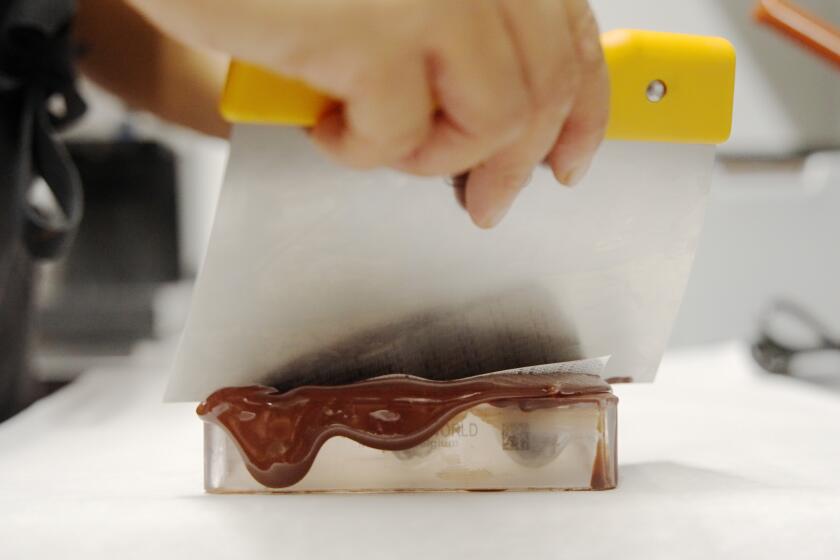
- Share via
Making chocolate is a sacred process, particularly for descendants of the ancient Mesoamerica, and for those looking to reconnect with ancestral practices, like Stephanie Villegas of Xochitl Vegan, a concept and pop-up restaurant based in L.A.
Known for her vegan hibiscus tacos, Villegas also hosts artisanal chocolate classes where she teaches students the process using ancestral tools and techniques.
“I wanted to bring forward things I was doing behind the scenes, things learned from my mother and grandmother, things that were ancient,” Villegas said of the cacao classes that started about two years ago.
Though Villegas hosts other culinary classes, like pupusas, mole, and making masa from scratch, cacao has been a through line in her class offerings. And as we enter colder months with warm beverages like champurrados and hot chocolates, her classes teach Angelenos just how elemental cacao is to Latin American culture and history.
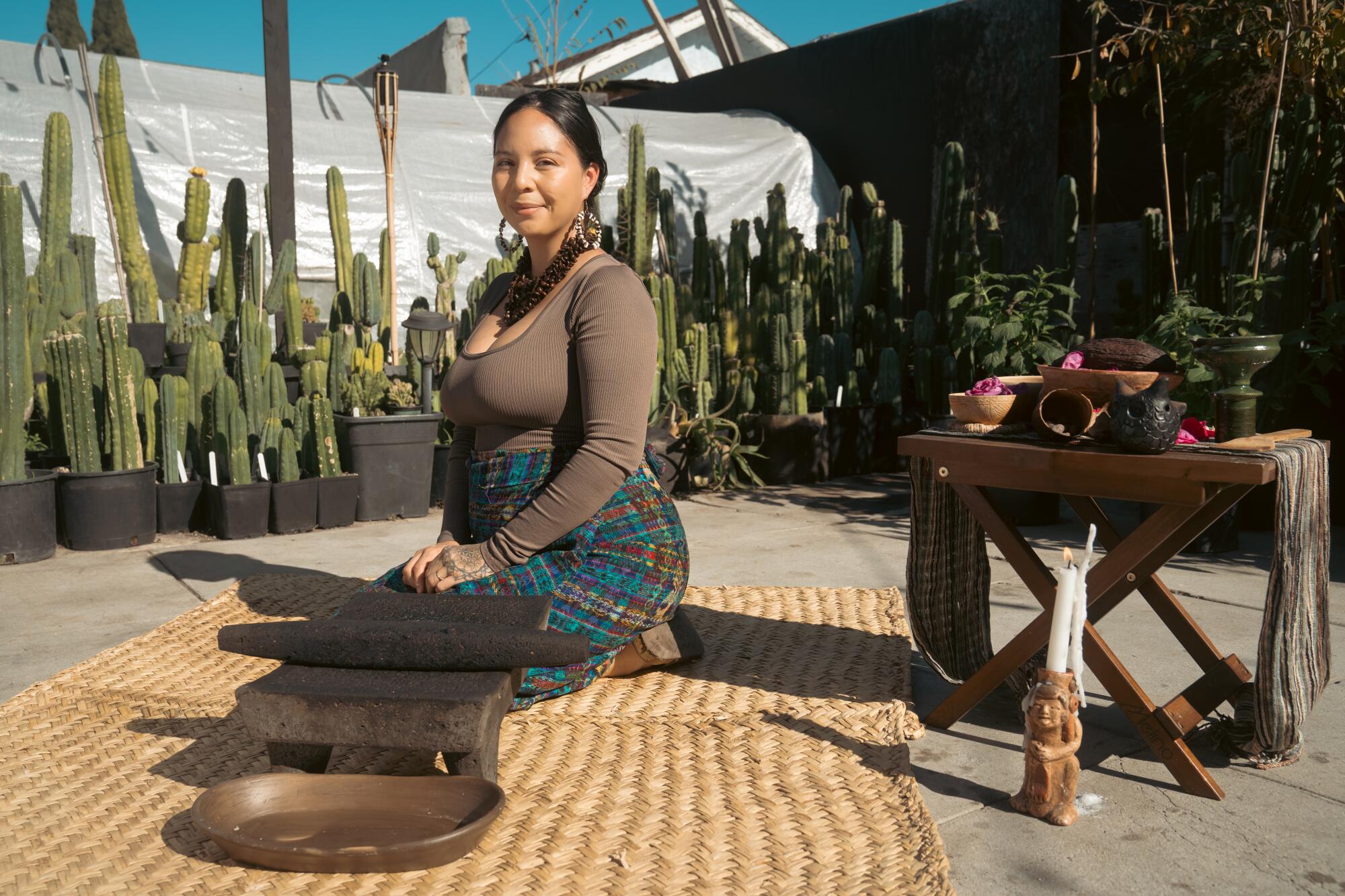
“Cacao is embedded in our origin story,” she said. “Scientists have found cacao in pottery, or jicaras. They’re found in our temples, and the use of cacao, ceremonially, has existed over 5,500 years. It’s embedded in who we are.”
Cacao is a fruit, growing from barks of trees in pods, oval in shape and bearing thick, blemished skin. Cut it open and you’ll find its edible sticky white pulp, known as “baba” that, according to Cacao Box, tastes like a mix of tropical fruit, lychee and mango. This flavorful flesh serves as an encasing for cacao seeds, otherwise known as cacao beans. The beans are first fermented, then dried, roasted, ground and finally mixed with sugar to make chocolate, or what the Nahuas called, xocolatl.
For modern-day chefs who are descendants of Latin American cuisine, room exists for traditional recipes to bend and crack, opening up possibilities for something new and reflective of today’s culture.
Sophie and Michael Coe, co-authors of “The True Story of Chocolate,” claim that in what is now Mexico, the Olmec peoples were the first to turn cacao into chocolate.
Cacao trees don’t easily sprout in just any location. They require a specific climate to thrive and be cultivated in. Mayans held cacao to sacred status calling it the “food of the gods,” believing the gods themselves emanated from cacao, and notoriously used cacao beans as currency.
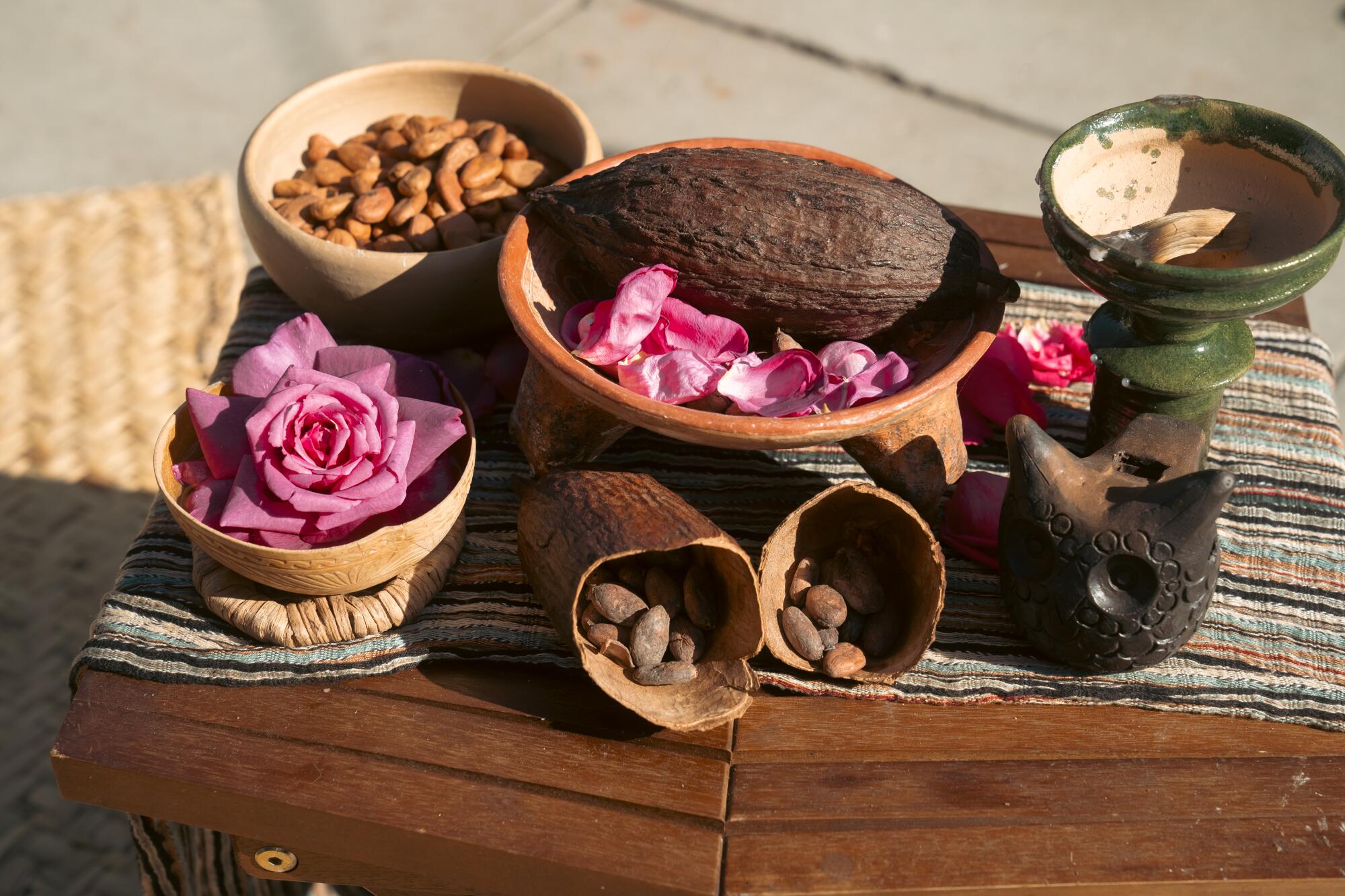
The Mexicas, or Aztecas, believed the cacao tree was a gift from Quetzalcoatl, a god of creation, and would prepare a cold frothy cacao beverage flavored with honey, mashed up flowers and vanilla pods served in gourds.
For Villegas, class offerings like making artisanal chocolate are part of something she calls the “traditional ancestral kitchen.”
Pumpkins are known for a ghoulish grin and delicious taste. Their origins are rooted in Mexican history
There’s no symbol that screams Halloween more than the warm glow of an orange pumpkin. But as big a part of autumnal U.S. culture as they’ve become, their origins point a bit more south to Mexico.
“We can look at it as the ancestral tools we use, the metate, clay comales and clay pots,” she said. “But for me, it’s a lot deeper, it’s more than just making our alimentos, it’s a very spiritual practice.”
Villegas said reconnecting to her culture, history and origins in the kitchen has brought her closer to ancient wisdom. For diasporic peoples of her lineage, Villegas explained that the migration away from the homeland has put people in survival mode.
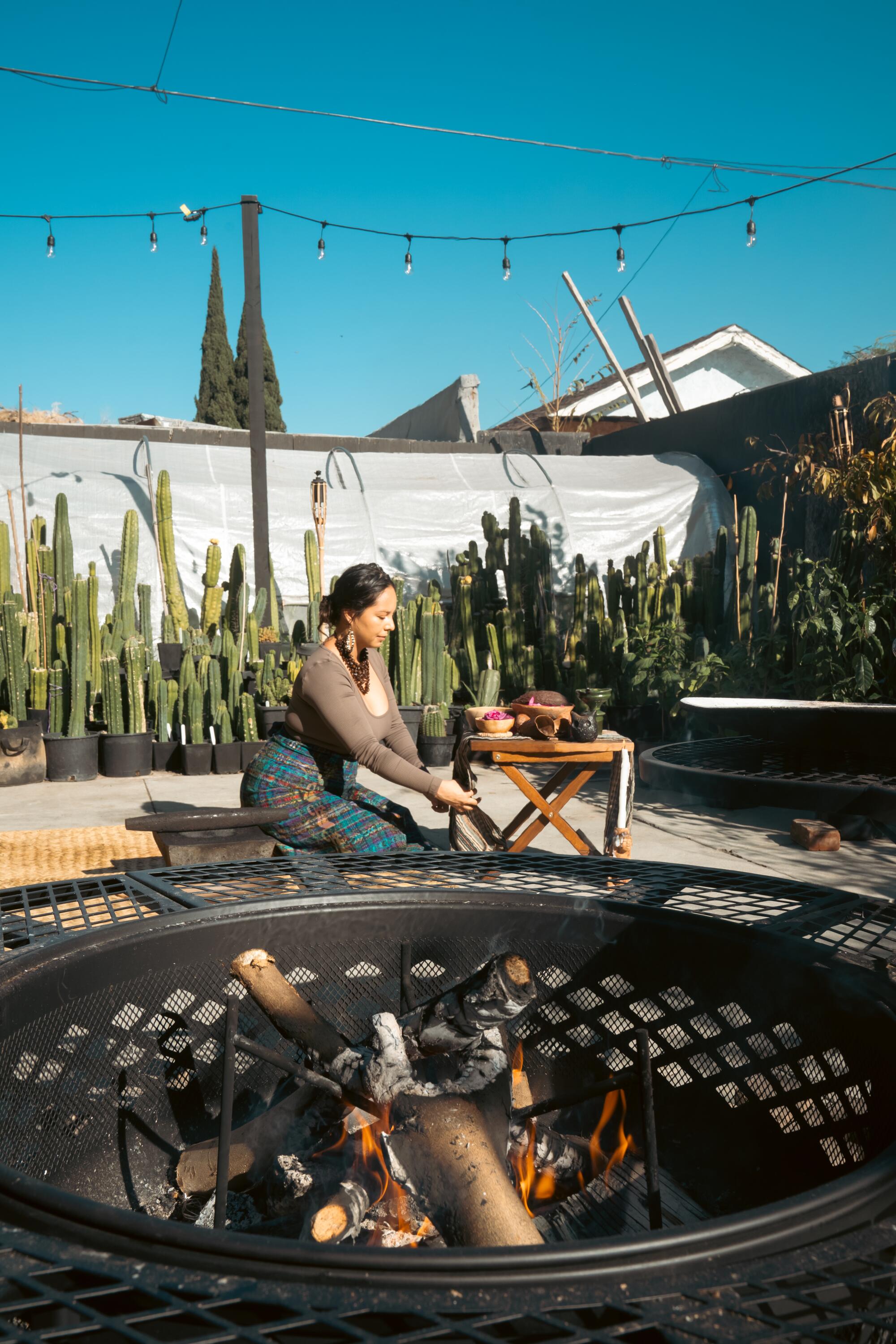
“It’s been hard to find time to reconnect,” she said. But it’s these practices and recipes found in what she calls the “traditional ancestral kitchen” that have reconnected her, both to her spirit and her roots.
“When I started consuming certain ingredients that I hadn’t in a long time, it felt like it activated something inside of me. Like a memory activation,” Villegas said. “When I began reconnecting to the metate, it just felt like another layer of remembrance.”
Preserving ancestral methods of making artisanal chocolate is particularly special for her. Villegas said it’s been a profound path to walk.
“It’s important to preserve these teachings because they’re part of who we are,” she said. “It’s an act of resistance, an act of keeping who we are alive, it’s honoring our ancestors, not only our human ancestors, but the earth, using her tools and keeping her alive.”
Not only does using the tools of the ancestral kitchen keep tradition alive, but it releases flavors in a way that opens them much more fully, according to Villegas. She explained how the slower process of grinding each individual ingredient releases oils, aromas and flavors much more potently.
From downtown to Inglewood and as far as Garden Grove, Black-owned coffee shops are claiming their place in the city’s stimulating scene.
“If you’re able to pay close attention, the flavors are completely different, a salsa or chocolate or mole is entirely different in a blender,” Villegas said. “The hard work creates a tastier dish.”
During her workshops, which go at the pace of her students, Villegas starts with raw cacao seeds. “Currently we have cacao from the Amazon, but it’s already been through a whole process — separated from fruit, dried and fermented.”

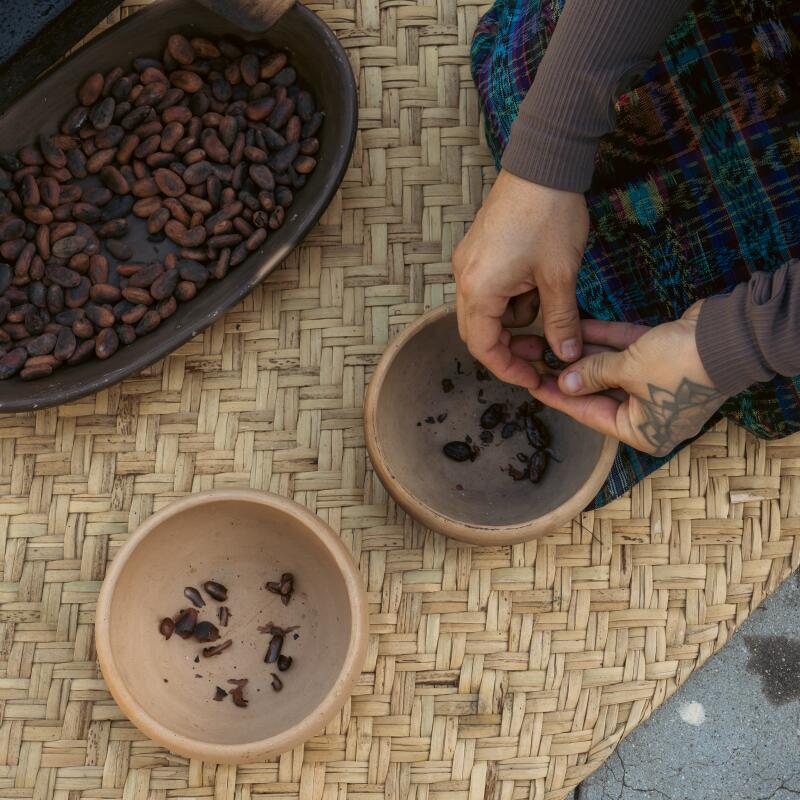
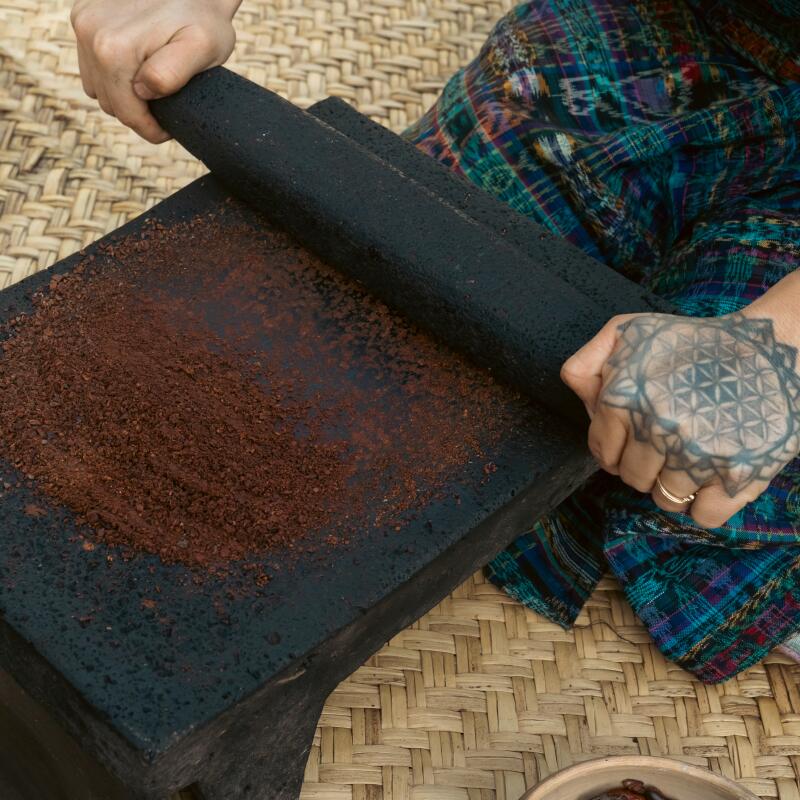
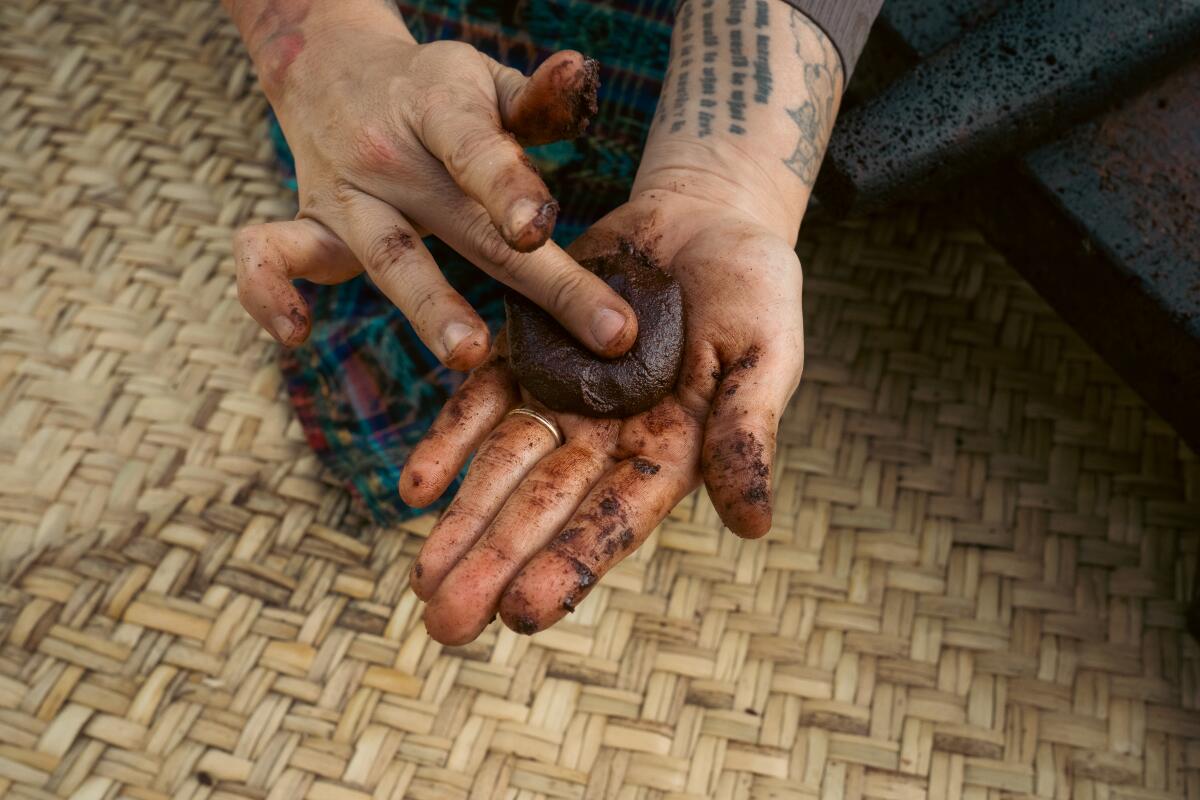
The process of Villegas’ cacao ceremony shown in four photos (Nalani Hernandez-Melo / For De Los)
The seeds get roasted, peeled by hand then ground up using the metate on the floor. While kneeling to twist the mano of the metate, the seeds are dragged across the curved surface to create a paste. It’s a full-body effort.
“I love using my metate on the floor, it connects me back to the earth, having the feeling of bowing and it’s a prayer in motion,” Villegas said.
A zero-waste chocolate program at a Michelin-star restaurant in Los Angeles means cacao husk in your tea.
Some folks come with experience, some catch on quickly, and some require a little more quality time with the motions, Villegas said. “It takes practice to learn, the metate can be very tiring.” But the best way to learn is simply to do, she advises, whether on the floor or at the kitchen table.
As for her goal with the classes, which are posted and updated on her Instagram, Villegas has a humble and mystical objective.
“I hope they wake up to the magic of the ancestral kitchen, the magic of chocolate, its symbology, metaphorically what it represents for us,” she said. “[I also hope] they develop more respect for these things, more understanding, a deeper want to learn more.”
Andrea Aliseda is a food and culture writer, vegan recipe developer and dog mom based in Brooklyn, N.Y., with published work in Harper’s Bazaar, Bon Appétit and Epicurious. She’s currently working on her debut plant-based Mexican cookbook, and you can find her on Instagram at @andrea__aliseda.
More to Read
The Latinx experience chronicled
Get the Latinx Files newsletter for stories that capture the multitudes within our communities.
You may occasionally receive promotional content from the Los Angeles Times.



